MP Board Solutions for Class 9 Civics Chapter 4 – Working of Institutions
MP Board Solutions for Class 9 Civics Chapter 4 – Working of Institutions are essential for understanding the structure and functioning of democratic institutions in the MPBSE curriculum. These well-structured answers help students grasp topics like the Parliament, President, Prime Minister, and Judiciary. Designed as per the latest syllabus, these solutions strengthen conceptual clarity and improve exam preparation. Ideal for revision and practice, they provide insights into India’s administrative system, making them a valuable study tool for scoring well in Class 9 Social Science exams.
MP Board Solutions For Class 9 Civics – Working of Institutions – Exercise Images
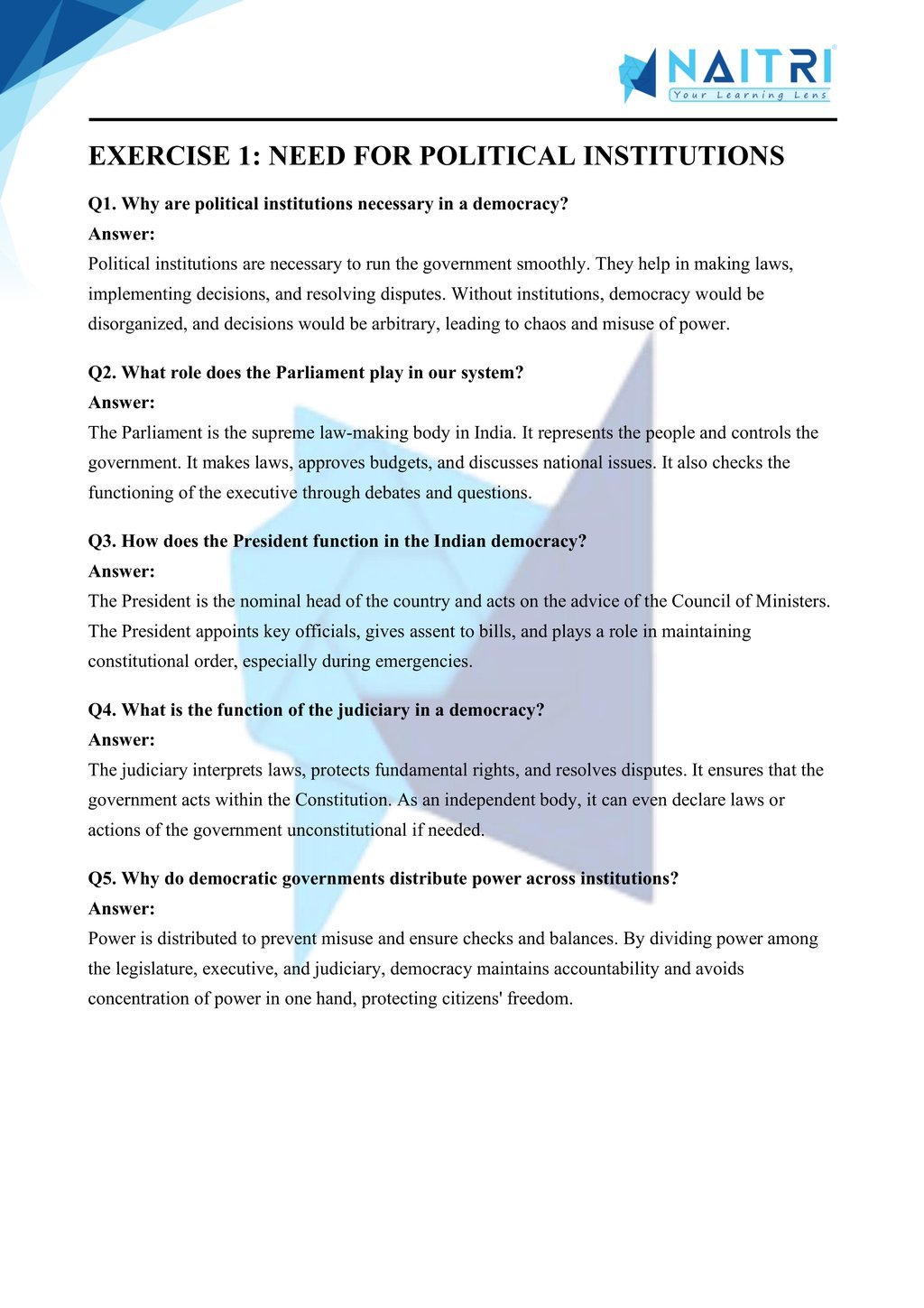
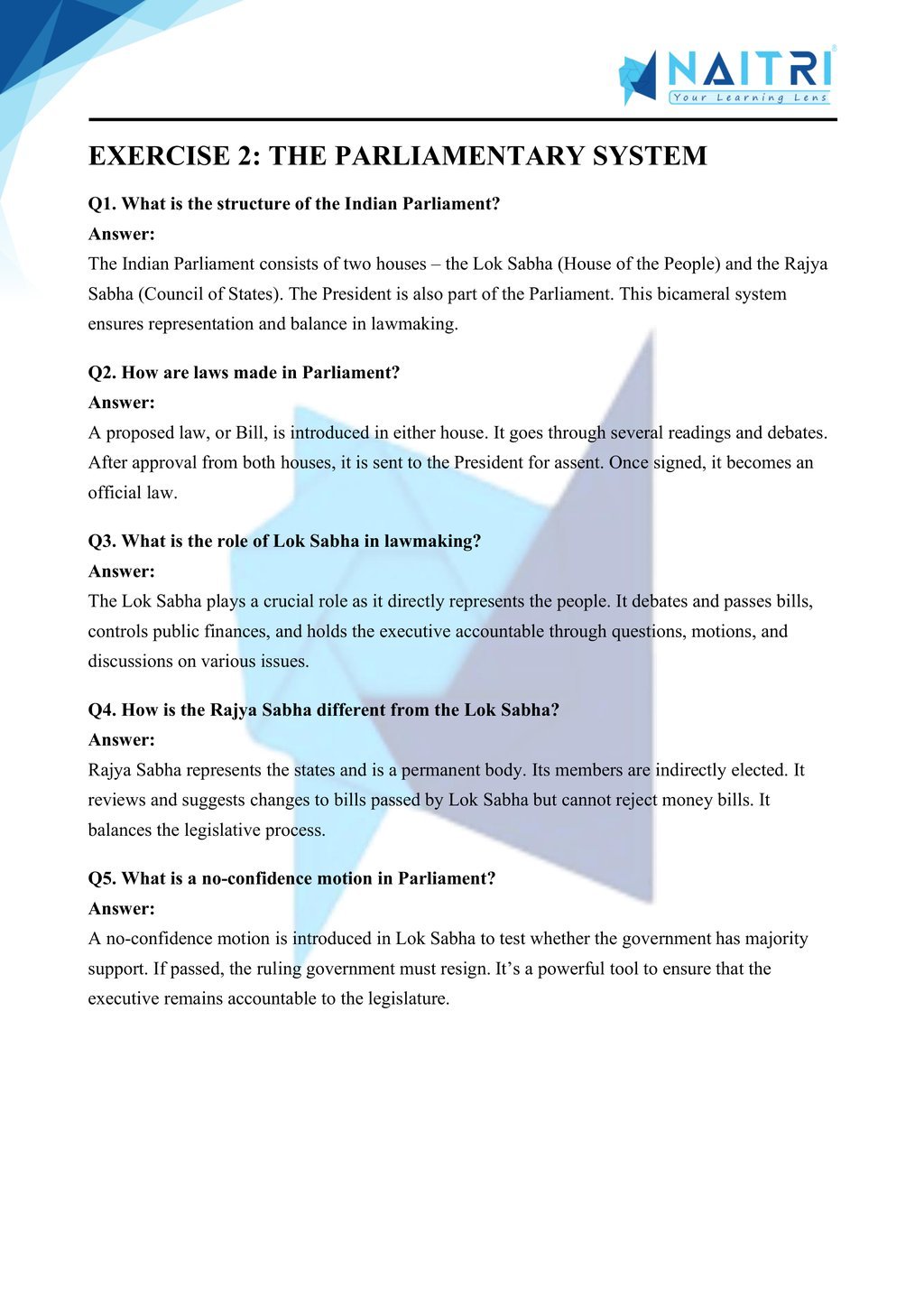
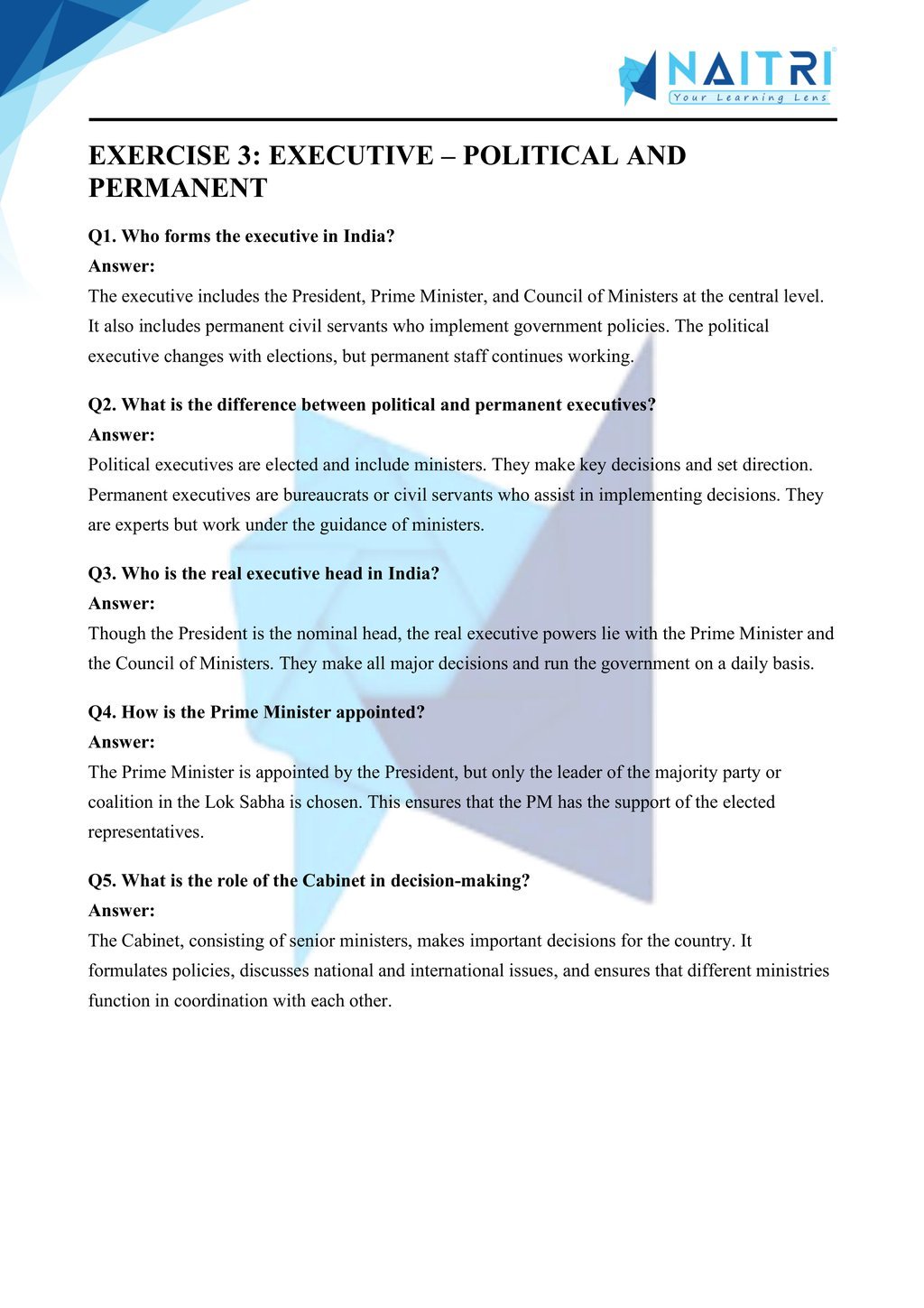
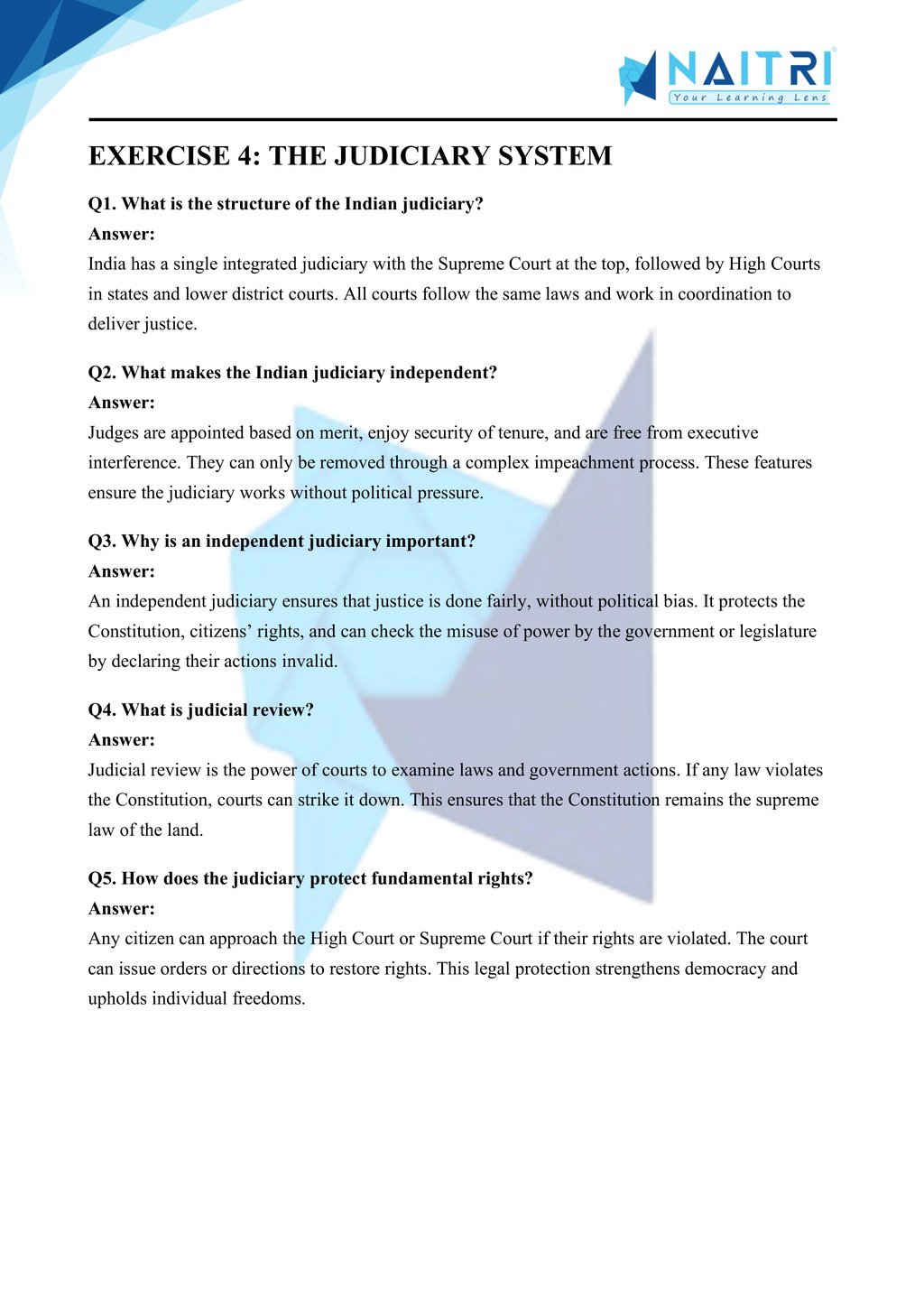
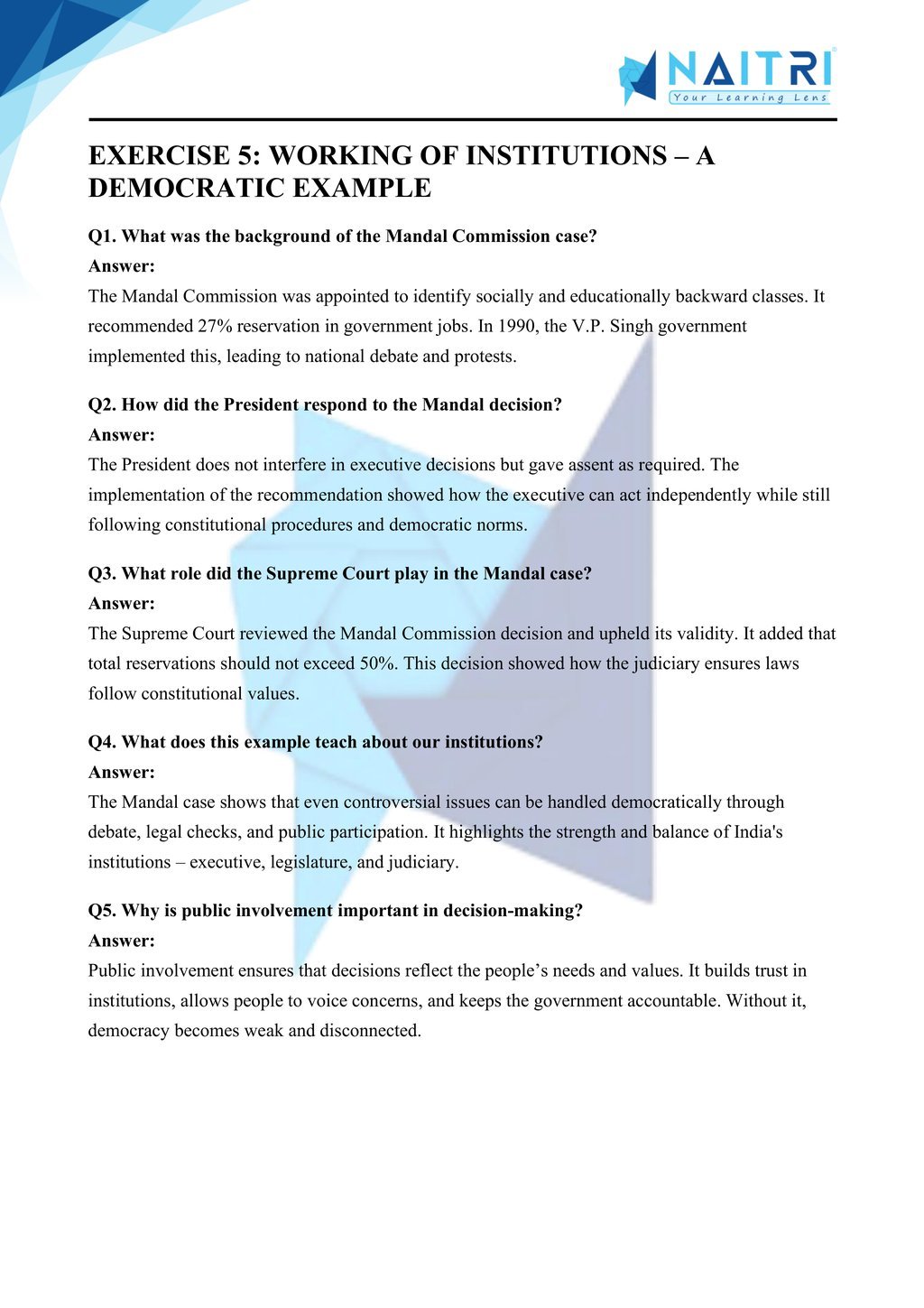
Experience Civics Like Never Before – With AR!
Understanding Working of Institutions is now more exciting and immersive! With the NAITRI App, you can explore complex civics concepts through Augmented Reality (AR). See parliaments debate, policies form, and institutions coordinate governance — right in front of you. Our AR-powered lessons make learning interactive, 3D, and fun, helping you retain concepts better and enjoy every topic.



Visualize . Interact . Understand . The future of learning is here
Working of Institutions – Important Questions with Answers
What are political institutions?
Answer: Political institutions are structures of governance like the Parliament, President, Prime Minister, and Judiciary that help in running the government efficiently and lawfully.What is the role of the Parliament in a democracy?
Answer: The Parliament is the supreme law-making body. It controls the executive, passes laws, approves the budget, and holds the government accountable.Why do we need political institutions?
Answer: Political institutions distribute powers and responsibilities, ensure law implementation, protect citizens’ rights, and maintain democratic order and transparency in governance.What are the two Houses of Parliament in India?
Answer: The Indian Parliament consists of the Lok Sabha (Lower House) and the Rajya Sabha (Upper House), which together make national laws and decisions.What is the role of the President in India?
Answer: The President is the constitutional head of the country. He/she signs bills into laws, appoints the Prime Minister, and acts on the advice of the Council of Ministers.Who is the real executive head of India?
Answer: The Prime Minister is the real executive head who leads the government, takes decisions, and coordinates the work of different ministries.How is the Prime Minister appointed?
Answer: The President appoints the leader of the majority party or coalition in the Lok Sabha as the Prime Minister of India.What is the Council of Ministers?
Answer: It includes the Prime Minister and other ministers who collectively take decisions and are responsible to the Parliament for their actions.What is the Cabinet?
Answer: The Cabinet is a group of senior ministers in the Council of Ministers, usually heading key ministries, and taking major policy decisions.What is the difference between Cabinet and Council of Ministers?
Answer: The Cabinet is a smaller body within the Council of Ministers, consisting of top-level ministers who take important policy decisions.What is meant by collective responsibility?
Answer: It means the entire Council of Ministers is collectively responsible to the Lok Sabha, and must resign if it loses its confidence.How is a bill passed in the Parliament?
Answer: A bill must be approved by both Lok Sabha and Rajya Sabha, and signed by the President to become a law in India.What is an ordinance?
Answer: An ordinance is a law made by the President when Parliament is not in session. It must be approved later by Parliament to remain valid.What is the role of the judiciary in India?
Answer: The judiciary interprets laws, ensures justice, protects fundamental rights, and acts as the guardian of the Constitution.What is meant by an independent judiciary?
Answer: It means the judiciary is free from influence of the legislature and executive. It can make decisions without external pressure.What is Public Interest Litigation (PIL)?
Answer: PIL is a legal action taken in public interest. It allows even a third party to approach the court for protection of public rights.Who appoints judges in the Supreme Court?
Answer: The President appoints Supreme Court judges based on the advice of the Prime Minister and in consultation with senior judges.What is the function of the Supreme Court?
Answer: The Supreme Court is the highest judicial authority. It hears appeals, resolves disputes, and ensures laws are in line with the Constitution.How does the Parliament control the executive?
Answer: It controls the executive through questions, debates, passing of no-confidence motions, and approving budgets and policies.What is a no-confidence motion?
Answer: It is a motion moved in Lok Sabha stating that the government no longer has the majority’s support. If passed, the government must resign.What is the role of civil servants in government?
Answer: Civil servants or bureaucrats implement decisions made by the ministers. They provide continuity, technical expertise, and help in policy execution.How is the Rajya Sabha different from the Lok Sabha?
Answer: Rajya Sabha is a permanent house, not dissolved, and represents states, while Lok Sabha is directly elected and has greater control over the budget.How are members of the Rajya Sabha elected?
Answer: They are elected by state legislative assemblies through a proportional representation system. Some are nominated by the President for expertise in fields.Why is Parliament considered the supreme institution in India?
Answer: Parliament represents the people’s will, makes laws, controls the executive, and decides on important national matters, making it the central decision-making body.How does working of institutions ensure democracy?
Answer: Institutions provide checks and balances, share power, ensure accountability, and allow for informed decision-making that respects the Constitution and people’s rights.
Working of Institutions explains how the major institutions of democracy—such as the Legislature, Executive, and Judiciary—function in India. Students learn about the roles of the Parliament, Prime Minister, President, and the Supreme Court. The chapter provides insight into how decisions are made, laws are passed, and rights are protected in a democratic system, reinforcing the importance of checks and balances.
Download Naitri App
Easy, Visual Learning — Right on Your Phone
Learn with Augmented Reality! The Naitri app makes CBSE and MP Board concepts interactive and fun — even in low-resource settings. Watch lessons, complete homework, take tests, and track progress — all in one place. Anytime. Anywhere.
Available on








